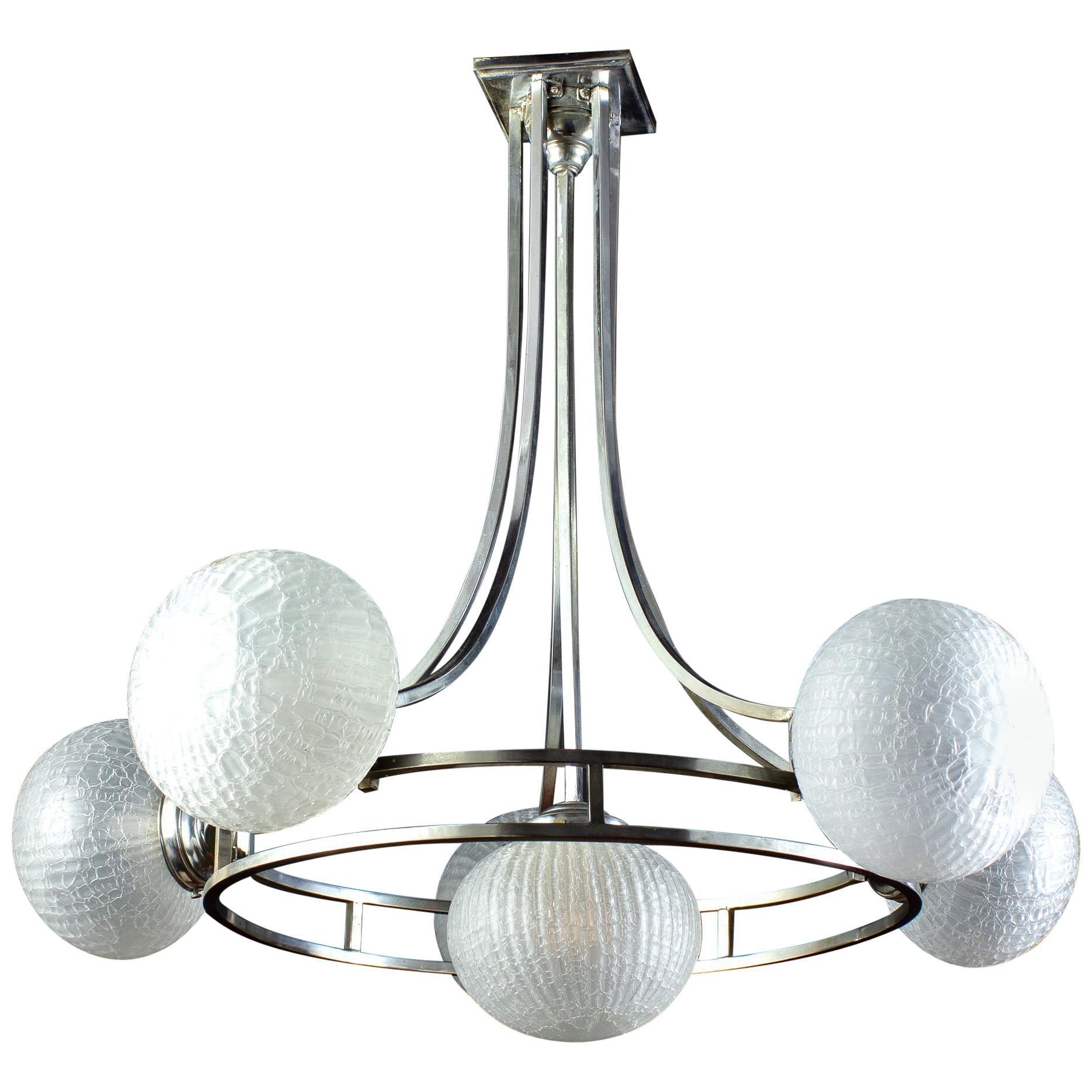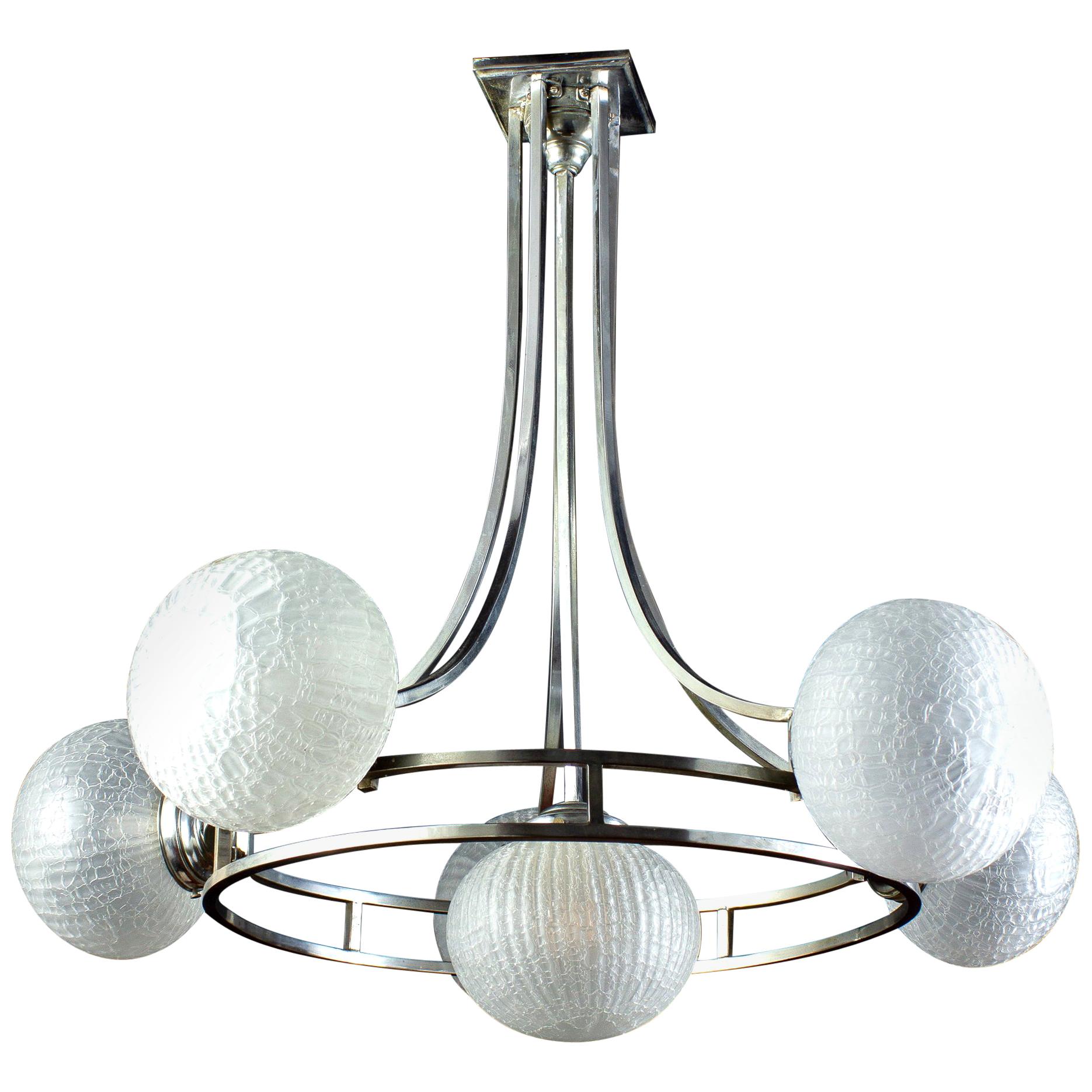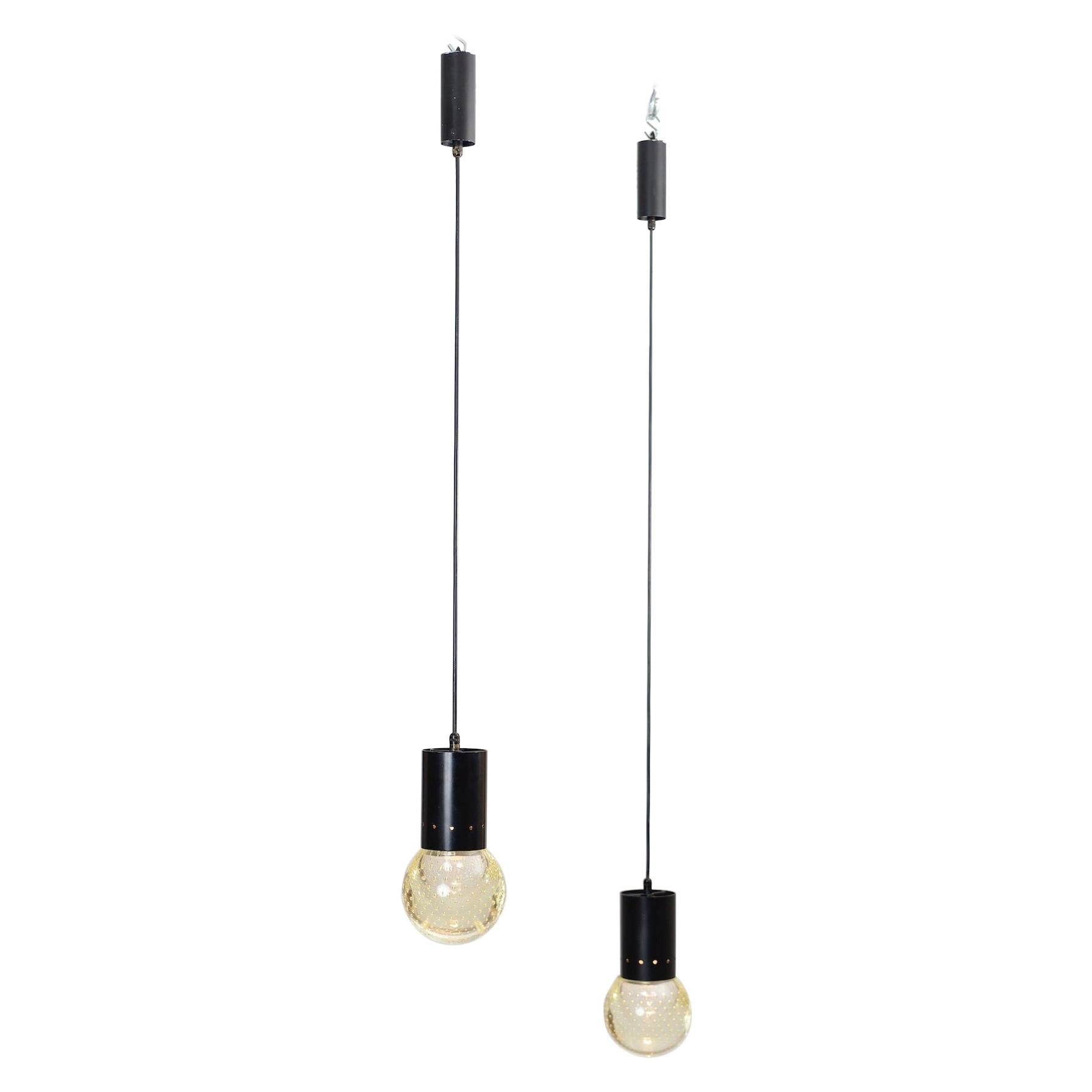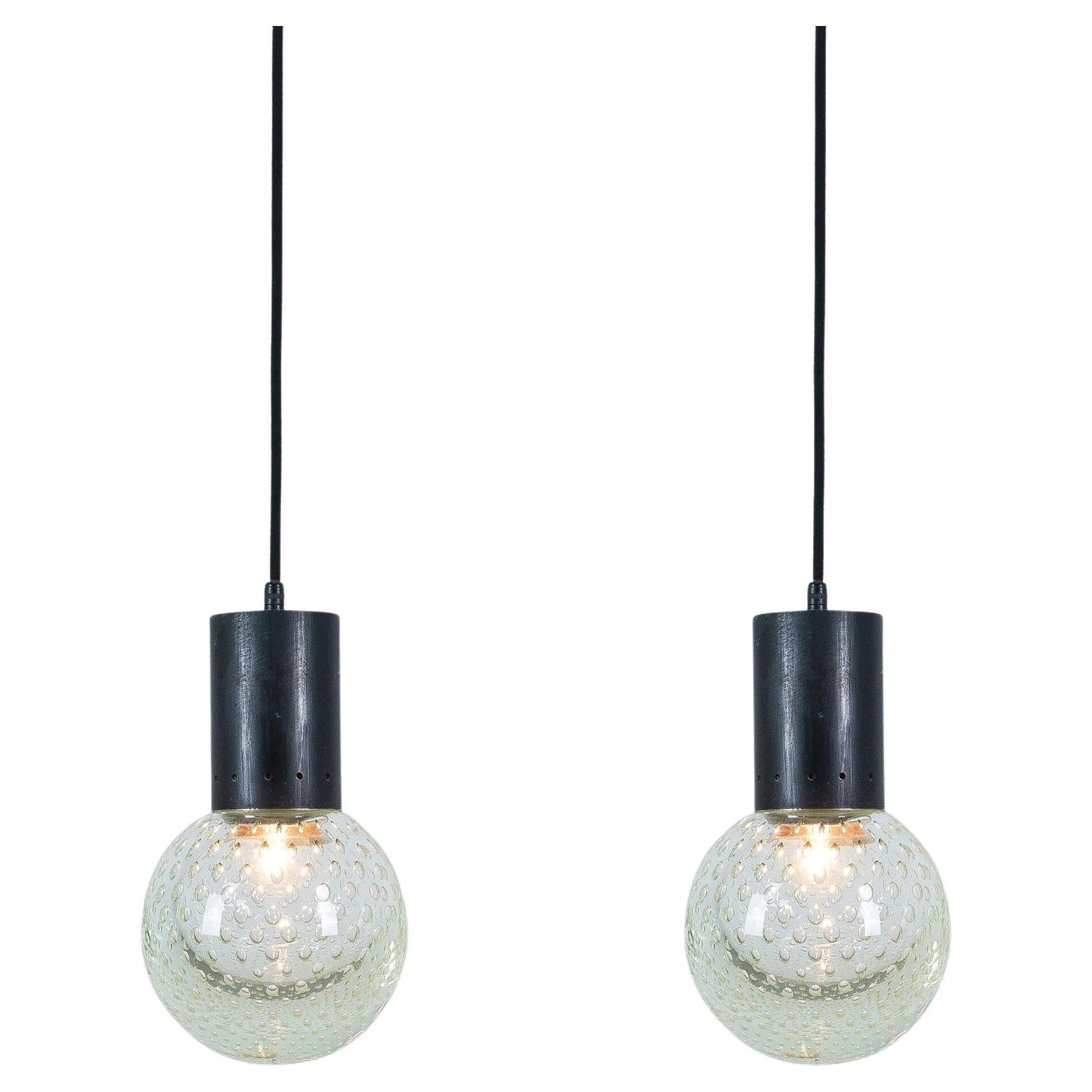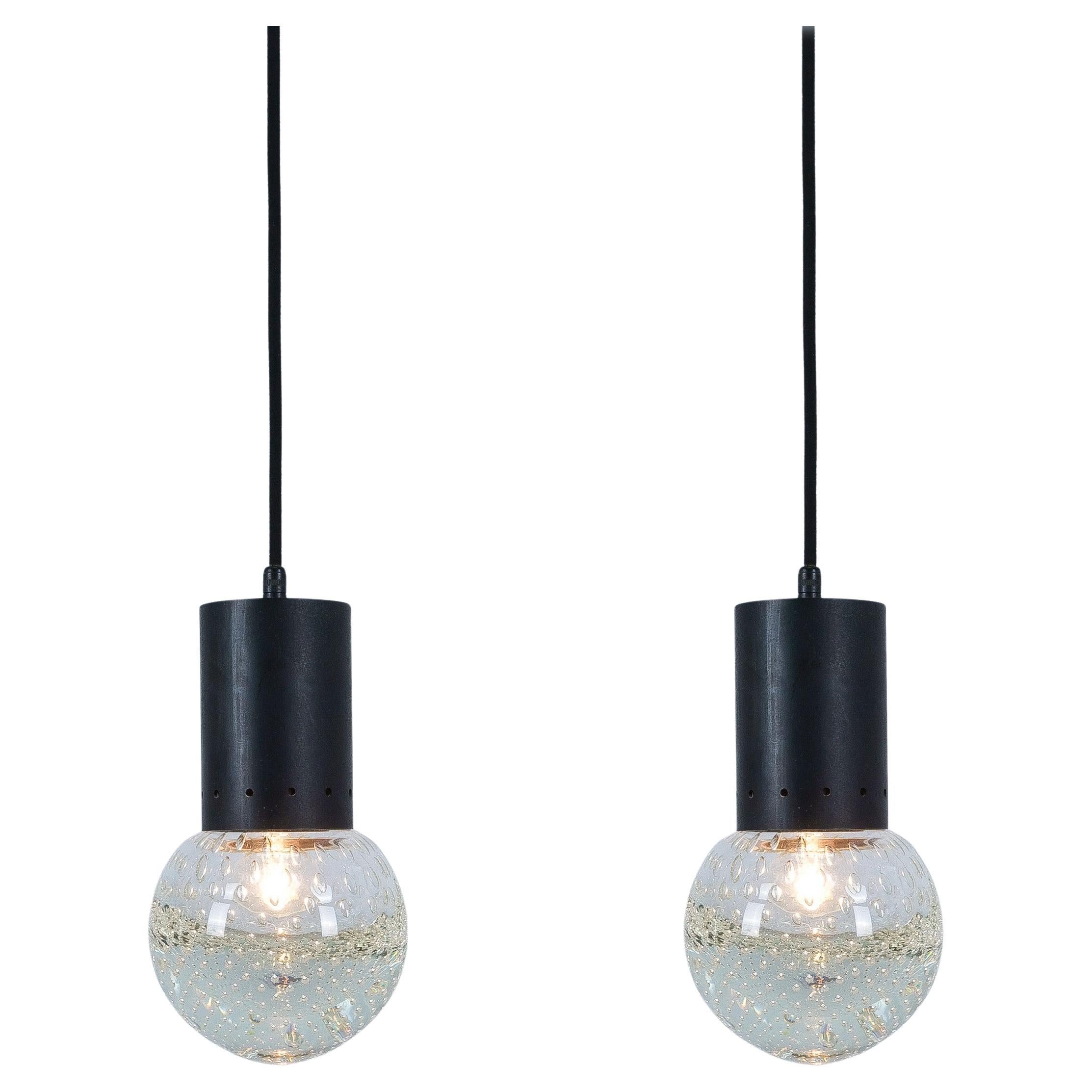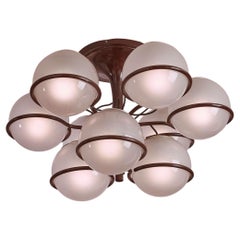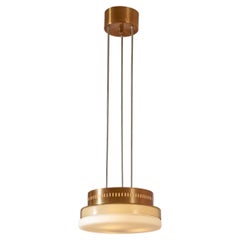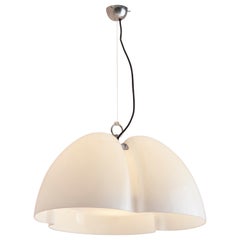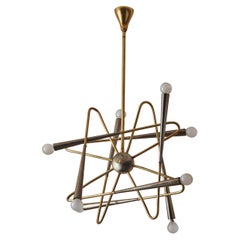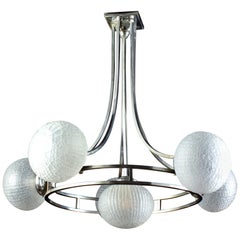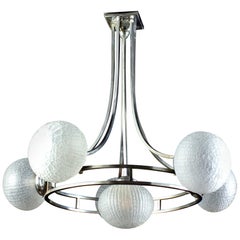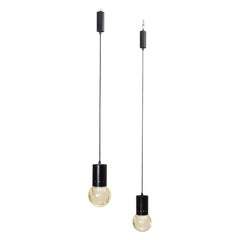Pendant Light by Gino Sarfatti with Seguso Glass, circa 1960
About the Item
- Creator:Gino Sarfatti (Designer),Seguso Vetri d'Arte (Manufacturer)
- Dimensions:Height: 25.6 in (65 cm)Diameter: 4.34 in (11 cm)
- Materials and Techniques:
- Place of Origin:
- Period:
- Date of Manufacture:1960s
- Condition:Wear consistent with age and use. Minor losses. Working condition.
- Seller Location:Chiavari, IT
- Reference Number:1stDibs: LU6764231697292
Gino Sarfatti
That a spiky, futuristic chandelier named “Sputnik,” which was highly suggestive of the Soviet satellite of the same name, designed by an Italian engineer could predate the space age and the satellite’s launch by a few decades is the stuff of legend. But in 1939, Venetian-born Gino Sarfatti channeled his obsession with light and expert engineering skills into a design so bold it predicted the future. He would go on to design around 700 lighting products in his lifetime — each table lamp, wall light, pendant and chandelier superb and unorthodox in shape.
Sarfatti’s singular focus on creating opulent lighting designs that were rational in their use of resources makes him one of the most innovative lighting designers in history. He was studying to be an aeronautical engineer at the University of Genoa when his family’s financial troubles led him to drop out and move to Milan to help. During this time, he built a lamp for a friend using a coffee machine’s electric components and a glass vase. This exercise sparked his fascination with lighting, and he went on to found Arteluce in 1939. What followed was a period of working with skilled artisans and tinkering with materials instead of sketching. The self-taught designer soon established himself as a creator of provocative, sculptural luxury lighting. Through the company, he collaborated with some of the 20th century’s most influential designers, such as Vittoriano Viganò, who worked on Arteluce lighting between 1946 and 1960. In the 1950s and ’70s, Franco Albini, Franca Helg, Ico Parisi and Massimo Vignelli all contributed designs.
Sarfatti used resources mindfully and injected functionality into everything he designed. His light fixtures were lightweight, easy to take apart and reassemble and could be affordably repaired. This marriage of utilitarianism and glamour lent Sarfatti’s designs a clean, minimal yet arresting splendor, based on their graphical forms and construction.
After World War II, Sarfatti embraced new wiring technologies and materials like plexiglass, such as his 1972 project with Carlo Mollino that filled the Teatro Regio in Turin with hundreds of plexiglass pipes. In 1973, Sarfatti sold Arteluce to FLOS. His foresight, invention and fearlessness as a designer are revered to this day.
Find a collection of vintage Gino Sarfatti lighting now on 1stDibs.
Seguso Vetri d'Arte
Members of the Seguso family have been leading figures in the manufacture of glass on the Venetian island of Murano since the late 1300s, but for most collectors of vintage design the name evokes two companies formed in the first half of the 20th century. Seguso Vetri d’Arte, born from a small consortium of master glass artisans that included Archimede Seguso (1909–99), thrived under the artistic directorship of Flavio Poli (1900–84), a designer with an eye for modern forms, color and pattern. Vetreria Archimede Seguso, meanwhile, was founded in 1946, when Seguso opened his own atelier in order to employ classical techniques in the making of modern glassware.
The owners of Seguso Vetri d’Arte were justly proud of their skills as craftsmen, but they were not worldly aesthetes — and they knew it. Poli had studied at the Art Institute of Venice, originally working in ceramics before switching mediums and taking up the art of glass. He introduced new simple forms to the genre — the best known of his designs being the Valva, which resembles a clamshell in profile — and employed several novel techniques such as corroso, which gives glass a rough, emery-board-like finish. Poli’s most collectible works are his sommerso pieces, made with a layering process in which clear and colored-glass vessels are “submerged” within one another, producing a kind of nesting-doll effect in striking, elegant vases with bands of separate and overlapped hues.
At his eponymous workshop, Archimede Seguso often favored highly decorative, age-old techniques employed with modern restraint. His layered-glass Losanghe vessels have the look of an abstract checkerboard while his free-form Merletto vases have delicate, lacy patterns created by painstakingly twisting two heated glass straws to create helixes around the walls of the piece.
Though different in their scope and mission, both of these furnaces bearing the Seguso name created some of the most beautiful, alluring and exquisitely crafted works in all of modern design.
- ShippingRetrieving quote...Shipping from: Chiavari, Italy
- Return Policy
More From This Seller
View AllVintage 1960s Italian Mid-Century Modern Chandeliers and Pendants
Aluminum
Vintage 1960s Italian Mid-Century Modern Chandeliers and Pendants
Metal, Copper
Vintage 1960s German Chandeliers and Pendants
Chrome
Vintage 1960s Italian Mid-Century Modern Chandeliers and Pendants
Brass
Vintage 1950s Italian Mid-Century Modern Wall Lights and Sconces
Metal, Aluminum
Vintage 1960s Italian Modern Chandeliers and Pendants
Brass
You May Also Like
Mid-20th Century Italian Mid-Century Modern Chandeliers and Pendants
Chrome
Mid-20th Century Italian Mid-Century Modern Chandeliers and Pendants
Chrome
Vintage 1950s Italian Mid-Century Modern Chandeliers and Pendants
Brass
Vintage 1960s Italian Mid-Century Modern Chandeliers and Pendants
Brass
Vintage 1960s Italian Mid-Century Modern Chandeliers and Pendants
Brass
Vintage 1950s Italian Mid-Century Modern Chandeliers and Pendants
Steel
